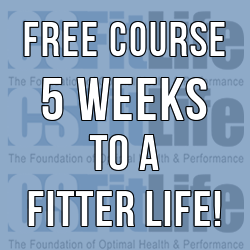We’ve seen (or done it!) hundreds of times! What exactly? Start a workout without doing any prep work. I understand… you are rushed, you are pumped to get into the training, you don’t like working on mobility… However, those excuses don’t negate the need to properly prepare our bodies for the upcoming work!
A warm up is generally described as preparing the body for physical activity. An effective warm up will enhance overall performance, allow for more effective and efficient movement patterns, and decrease the risk of injury. [i] In other words, suck it up and do it… your body will thank you!
So, how should we program a warm up? Well, that depends. What are you doing during the training session? Are you just lifting, running, rowing, or are you doing some combination? The warm up should be geared toward the upcoming activities.
For example, if I am only running, I am not going to spend a lot of time working on my upper body. Instead, I’ll focus on my ankles, calves, hamstrings, hips, and core. On the other hand, if I am performing large lifts that require a significant range of motion (squat, snatch, clean & jerk, etc), I need to prepare my entire body.
Even though the exact elements may vary, a good warm up will generally consist of cardiorespiratory work, foam rolling, dynamic movements, and specific mobility work.
Cardiorespiratory Work
The purpose is to increase your heart rate and body temperature and should last 2-5 minutes. Some good examples include jumping rope, slow jogging, rowing, etc. While I don’t always include cardiorespiratory work, it is especially important for those who training early in the morning or when it’s cold outside.
Foam Rolling
Foam rolling is great for pre-training but it is also an awesome addition to the post-training cooldown. Prior to training, I don’t spend a lot of time here but there are a few spots I like to hit regularly. Those include the achilles, calves, glutes, thoracic spine, and lats. Try to spend 30 – 60 seconds on trouble areas. When you are done training, come back and really hit the trouble spots!
Dynamic Movements
Dynamic movements should activate your muscles, take them through a full range of motion, and generally aid in preparing for the movements included in the training session. Good examples include leg swings (front-to-back and side-to-side), arm circles, wrist circles, mountain climbers, trunk rotations, etc.
Specific Mobility Work
Specific mobility work might include work on your goats (i.e. stuff you struggle with) or prep for movements in your training session. For example, my ankle range of motion is not as good as I would like for it to be. So, I include some ankle mobility in every warm up. If I am squatting or doing any type of Olympic lifts, I will spend extra time on my ankle mobility. Examples of specific mobility work would include hip or shoulder external rotation, hip extension, mobilizing the thoracic spine on a foam roller, etc.
Putting it all together
So, I gave you a lot of generalities for a warm up. Without knowing your specific weaknesses and movements to be performed, that is the best I can do. However, below is a typical warm up for me. It takes about 20 minutes but I am fully energized and ready to work when I am done!
- Banded ankle mobility x 1 min/side
- Leg swings front-to-back or Toy Soldiers x 10/leg
- Inch worms w/ a push up x 5
- Single leg Romanian deadlift x 10/leg
- Squats w/ 2 second hold at the bottom x 10
- Russian baby makers w/ 5 second hold x 5
- Cossack squats w/ 2 second hold x 5/leg
- Mountain climbers x 10
- Couch stretch x 1 min/side
- Foam roll thoracic spine x 30 seconds
- Thoracic extension on foam roll x 30 seconds
- Foam roll lats x 30 sec/side
- Overhead, banded lat stretch/shoulder distraction x 1 min/side
- Banded chest stretch x 1 min/side
Also, here a two videos by Kelly Starrett that can give you some ideas:
[i] Clark, Michael, Scott Lucett, and Rodney Corn. NASM Essentials of Personal Fitness Training. Third ed. Lippincott Williams & Wilkins, 2008. 174-175. Print.


